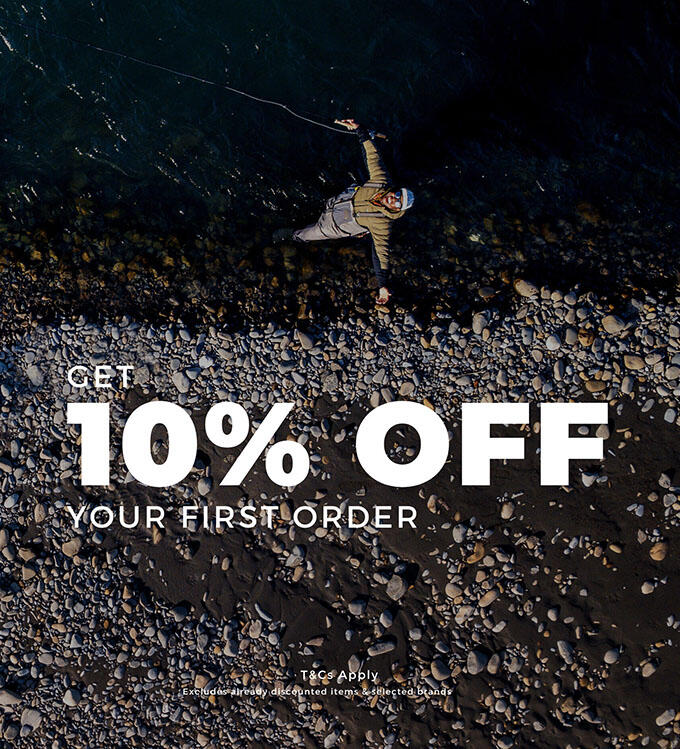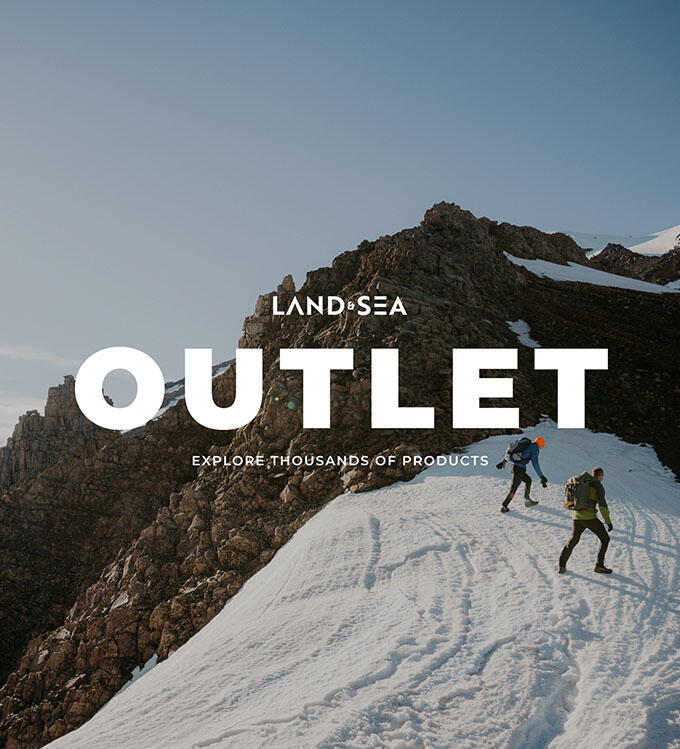The Ultimate Guide to Buying a Baitcaster
At Land & Sea, we’re lucky enough to have a Canadian stud at our disposal who has more experience fishing baitcasters than the rest of us combined. Whether he’s in the Great White North targeting Smallmouth Bass, Northern Pike or Giant Muskies or more recently soft baiting for snapper at Little Barrier he’s always got a specific baitcasting set up in the boat ready to go! Tapping into his years of experience, we’re going to break down everything you need to know when it comes to choosing the perfect baitcasting set up. Whether you’re new to it or a seasoned expert, this breakdown will make that tough decision easy. So let’s hand over the mic to our fishing expert Taylor Williams. For those who are regulars in our Flagship store, Taylor is a regular & trusted face who also goes by the nickname ‘Maple Leaf’, subtly paying homage to his love for Maple Syrup. Before we get off topic let’s get into it Tay Tay…
When making your first purchase, there are a few things you need to consider. There are a lot of different kinds of baitcasters, ones with high gear ratio, low gear ratio, round profiles and low profiles. With so many baitcasters on the market, each one can have a specific advantage with certain styles of fishing. We’re going to break down the best baitcasting combo for soft baiting here in New Zealand. Whether you’re targeting saltwater species like snapper, trevally or kahawai or using it for New Zealand's freshwater species, whether it be Trout or Perch. These setups are going to get the job done for you!
Here is the full list of what we will be covering within this Baitcasting soft bait buying guide:
- Why choose a baitcaster over spinning
- Gear Ratio
- Baitcasting profile
- Braking System
- Brands and models
- Daiwa
- Shimano
- Okuma
- Our top 5 baitcasters
- Baitcasting Rod
- Summary
Why choose a baitcaster over spinning
The most common reason people switch to baitcasters over spinning reels would be for casting accuracy and control. Baitcasters offer superior casting accuracy and control, allowing you to place your lure exactly where you want it. The ability to thumb the spool during casting provides more control over line release compared to spinning reels. Whether you’re fishing the shoreline around structure or fishing the rivers, a baitcaster will make sure the lure lands exactly where it needs to be. Baitcasters can handle a wide range of fishing techniques and lure types, from lightweight finesse baits to crankbaits or jigs. The ability to adjust the braking settings on a baitcaster, makes casting any lure an easy task. Baitcasters offer excellent sensitivity, allowing you to feel even subtle bites and movements transmitted through the fishing line. This sensitivity helps you to detect strikes more effectively and react quickly to a hookset, which is key when it comes to softbaiting.
Baitcaster Gear Ratio
Gear ratio is the number of times the spool rotates with each complete turn of the handle. Most common gear ratio’s being 6.4:1 or 7.2:1, which means the spool turns 6.4 times per 1 rotation of the handle, or 7.2 times per complete rotation. The higher the gear ratio, the more line gets cranked in per turn, sometimes reaching 110cms of line retrieved with one complete rotation of the handle on the larger 500 models. The higher gear ratio reels are perfect when wanting to fish a fast presentation with your bait/lure. The lower gear ratio reels are a personal favorite for soft baiting, allowing a more finesse presentation, more torque and power for getting those fish out of cover or away from the reefs. It’s also easier to use for deeper water presentations and is easier to use for longer periods of time. High gear ratio reels can also be used for soft baiting, especially with paddle tail style soft baits easily reeled in with a slow retrieve.
When using baitcasters vertically I suggest the use of a lower gear ratio to increase cranking power. Most popular with NZ anglers when Kabura fishing or slow jigging for species such as Snapper, Kahawai & Kingfish. The lower gear ration allows you to keep the movement of the lure slow and work lures as designed.
Baitcasting profile
There are two types of baitcasters when it comes to casting: Low Profile and Round Profile. The low profile is the most popular and most common bait cast reel. Its sleek design fits comfortably in your hand and makes casting for hours far easier. Low profile reels are used mostly for smaller species, but Daiwa and Shimano have 400/500 size reels, that are perfect for bigger species. The most common size for softbaiting would be the 200, with enough cranking power to handle 20lb fish, commonly paired with 30lb braid but big enough to handle 50lb if need be. The round profile is most common when it comes to heavier fish and all things trolling. It offers more line capacity and can be used with heavier lines with its bulkier design. The bulkier design is more robust and durable, making it a perfect fit for any saltwater fishing. When it comes to soft baiting, the low profile is the way to go with increased sensitivity and comfortable fit. Commonly used for fishing Slow Jigs or even bait fishing, round profile baitcasters offer convenience to any angler.
Braking System
There are three types of braking systems: Centrifugal Braking, Magnetic Braking and the Hybrid braking system. The Centrifugal system uses small weights or brake blocks, that move outwards towards the side plate due to the centrifugal force. This creates friction which allows the spool to slow down while casting. This braking system typically has switches/pins on the inside of the baitcaster than can be adjusted to control how many brakes are active, allowing the angler to increase or decrease the amount of friction. Magnetic Braking, which is the best system for newbies in the baitcasting world. It is a simple braking system controlled by an external dial on the side of the reel. When the spool spins during casting, an electromagnetic force is used to slow down the spool. The dial allows you to adjust the distance between the magnets and the spool, allowing for an increase or decrease in the magnetic force. The easiest way to adjust to the right distance is to drop your jig/lure into the water. When the jig/lure hits the water, you want the spool to slow down quickly keeping the line in the spool instead of spitting out which leads to the nasty bird's nest! The hybrid braking system is simply the two systems smashed together in one reel. Mostly using the magnetic system as the main braking system, except you have the option to release the pins inside the baitcaster, giving you more distance in a cast with less effort.
Battle of the Brands
Daiwa has come out with some amazing cutting-edge technology with its Magforce braking system and T-Wing System (TWS) for reduced friction during casting, as well as technologies like the Digigear and hypermesh. Whether you want a top-of-the-line reel like the Tatula or Lexa HD or the budget friendly Fuego, Daiwa has you covered! When it comes down to it, it’s hard to beat the Tatula models when it comes to soft baiting.
Shimano has been leading the way with baitcasters for quite some time. With older models like the Calcutta or Curado still leading the pack and coming up with new versions to this day. Shimano has SVS Infinity braking system for precise casting control, X-Ship for improved gear durability and smoothness, and Hagane body construction for rigidity and strength. The Curado models are the best choice when it comes to soft baiting, coming in at a close second is the budget friendly SLX!
Okuma has a wide range of good quality baitcasters for an affordable price. They are durable, good quality and easy to use for beginners! Okuma baitcasters have a multi disc brake system, corrosion-resistance material for longevity and great design for comfort. Okuma has a wide variety of baitcasters, with our favorite for soft baiting being the Okuma Hakai!
Overall, all three brands have great baitcasting options, with unique technology, strengths and characteristics, the choice between the three comes down to personal preference and which one suits your budget. It’s always worth spending the extra dollars on a quality baitcaster, with more technology when you know you’re going to use and abuse it!
Our top 5 baitcasters for soft baiting
- Daiwa Tatula HD 200H LTD
- Shimano Curado MGL 150HG
- Daiwa Fuego 100H
- Shimano SLX 150 HG
- Shimano Caius 150HG B
Baitcasting Rods
When it comes to the perfect rod for baitcasting with soft baits, there’s plenty of options out there. Regardless of where you’re fishing, a Medium or Medium/Heavy power rod is a must. Unless you’re throwing big baits for king fish, which a Heavy or Extra Heavy would be more fitting, a Medium or Medium/Heavy power rod is all you need for your typical softbaiting. Giving you excellent sensitivity and enough back bone to handle a variety of fish. Match that up with a fast or extra-fast tip action, for extra sensitivity to feel the subtle bites, and the right kind of bend in the upper portion of the rod that pairs perfectly with softbaiting when it comes to lure control and a quick hookset. If you’re targeting some bigger size fish, bumping up to a Heavy or Extra Heavy power rod would be important. They might feel stiff at first, but once a fish locks onto that softbait, you’ll see that rod work its magic. Depending on the type of fishing you’re doing, whether it’s from the rocks, a boat or even on smaller rivers for trout, the length of your rod will be an important one! When it comes to fishing from the rocks, a rod 7ft 6 (2.28m) and up will be the perfect size. Giving you enough length to have more control over the fish and keeping them off the shoreline during the fight. The longer length of the rod will also allow you to cast the softbait out further than a shorter rod. When fishing from a boat, you can go all the way down to a 6ft 6(1.98m) rod, up to a 7ft (2.13m) rod which gives you plenty of length for fighting those fish. Fishing for trout in a smaller river, a 6ft (1.82m) rod will allow for better accuracy with casting and more control in tight spaces. When it comes to trout fishing, a medium power rod with a fast action tip will be your best choice. Remember to match your length with the type of fishing you will be doing, the power to the size of fish and get that fast action tip to lock in those quick hook sets with a rod that has enough sensitivity to detect the lightest bites out there.
Summary
With all the basics covered, you should be ready to come down to Land & Sea on Pollen street or jump over to our baitcaster section online and get yourself into the baitcasting world! The baitcasting world is finally reaching New Zealand, and here at Land & Sea, we’re proud to share our wealth of knowledge and to help get your hands on the perfect softbait baitcasting set up today! Come on down for a chat, a beer and let's get that baitcaster in your hands! Don’t forget to ask Maple Leaf for some tips on how to get those wicked bird nests out, we know he’s had his fair share of those!










